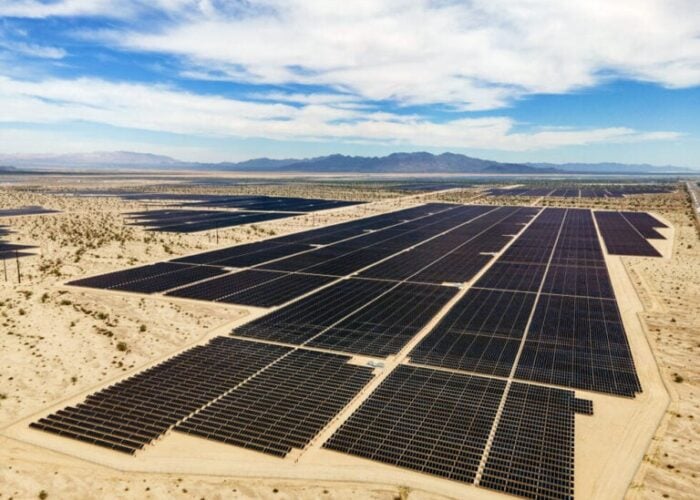Japanese telecoms giant Softbank has revealed a plan to build a 5.8MW solar farm in Hiroshima through its renewable energy projects division, SB Energy.
SB Energy will build the 10.1 hectare plant, “Softbank Hiroshima Sera Town Solar Park”, and plans to have it up and running by February 2017. It will have an annual output of around 6,275,000kWh. The company claims that based on an average usage figure per residence of 3,600kWh annually, the plant will supply enough electricity to power 1,700 households.
Try Premium for just $1
- Full premium access for the first month at only $1
- Converts to an annual rate after 30 days unless cancelled
- Cancel anytime during the trial period
Premium Benefits
- Expert industry analysis and interviews
- Digital access to PV Tech Power journal
- Exclusive event discounts
Or get the full Premium subscription right away
Or continue reading this article for free
A Softbank spokesman based in Japan, Yuichi Kenasa, told PV Tech earlier this year that SB Energy “is going to try all kind of renewable energy: large-scale solar, wind power, and if we have [the] opportunity, geothermal and bio.”
Kenasa said he hoped that by successfully developing large-scale renewable energy projects, Softbank’s example could encourage other large companies to also participate in the industry.
Kenasa said for the meantime that SB Energy had chosen as a strategy to prioritise large scale renewable energy projects as the quickest means of adding capacity. As of May 2014, according to an infographic distributed by the company, it had 62.7MW of large-scale PV already in operation across Japan (see picture). Softbank’s president, Masayoshi Son, announced news of the 5.8MW Hiroshima plant on the SB Energy website.
Son is the founder of the Japan Renewable Energy Foundation (JREF), a non-profit advocacy group headed by Son, Tomas Kåberger, a professor of technology who has served on many environmental groups and committees in his native Sweden, and Mika Ohbayashi, a policy advisor who left a job at the International Renewable Energy Agency (IRENA) to work with JREF. Started up in the wake of the Fukushima nuclear crisis that followed the tsunami that hit Japan in March 2011, the foundation has been characteristically outspoken in its advocacy for a ‘no-nuclear’ policy for Japan.
Japan’s government has made further moves in the past few days to begin restarting operations at some nuclear power facilities, including some news reports that a reactor in Sendai, less than 100 miles from the Fukushima Daiichi plant, is being readied to resume generating power.
Speaking to PV Tech’s sister publication, Solar Business Focus earlier this year following publication of the national energy plan, a document updated sporadically every three to four years, Mika Ohbayashi criticised Japan’s government for its reluctance to set definite targets for renewable energy, while refusing to rule out the return of nuclear power.
“Public polls say support for phasing out nuclear power is actually increasing – because we already know we could survive more than one year without any nuclear. Polls show that 80% of Japanese people think phasing out nuclear is a very positive way for Japan – a clear majority of the public,” Ohbayashi said.






